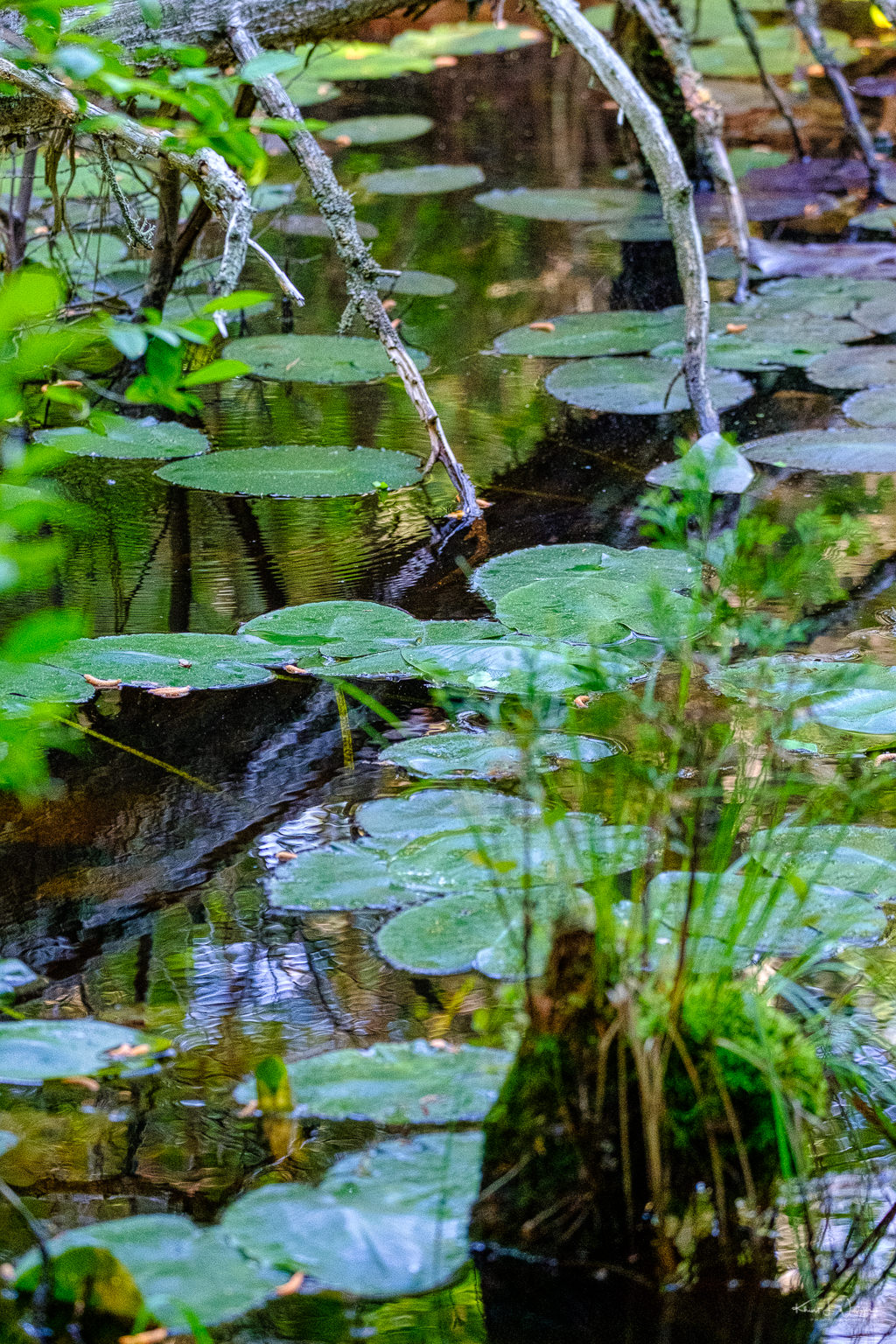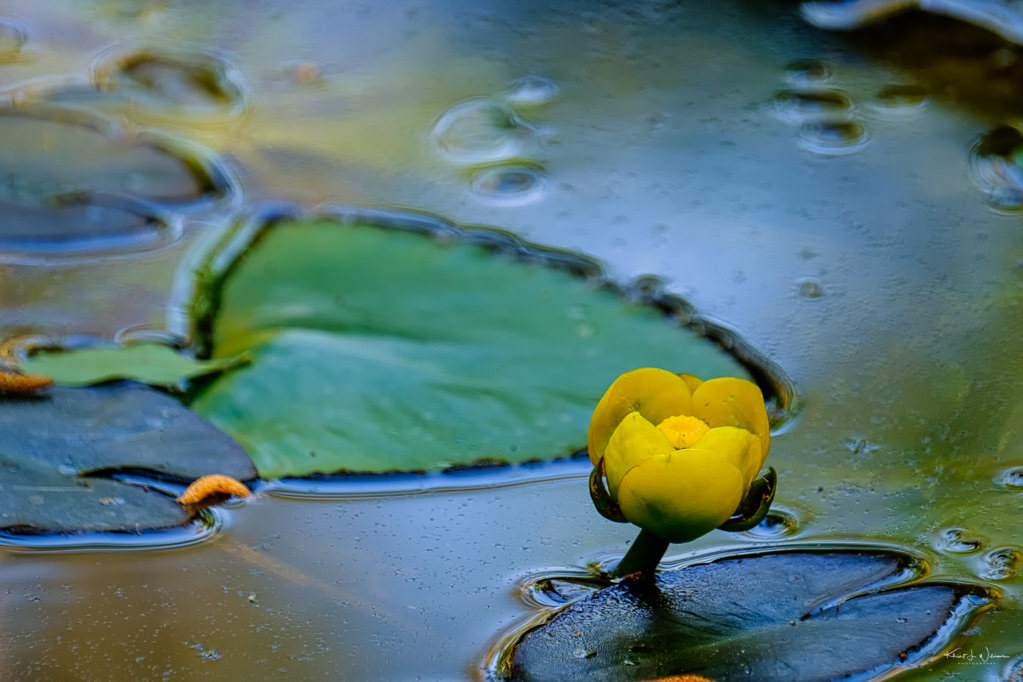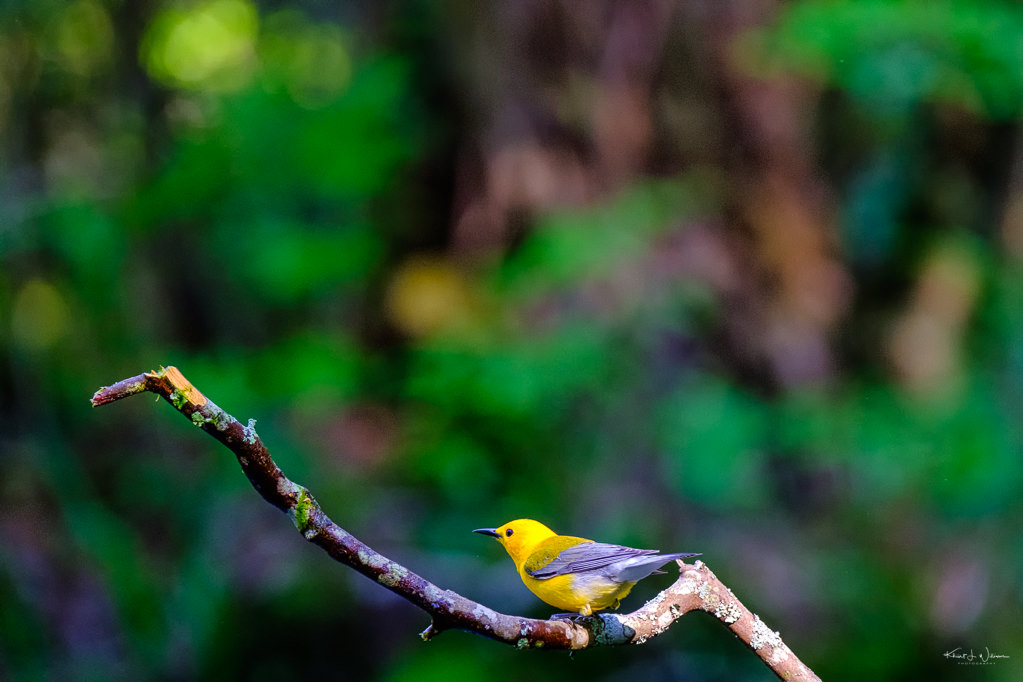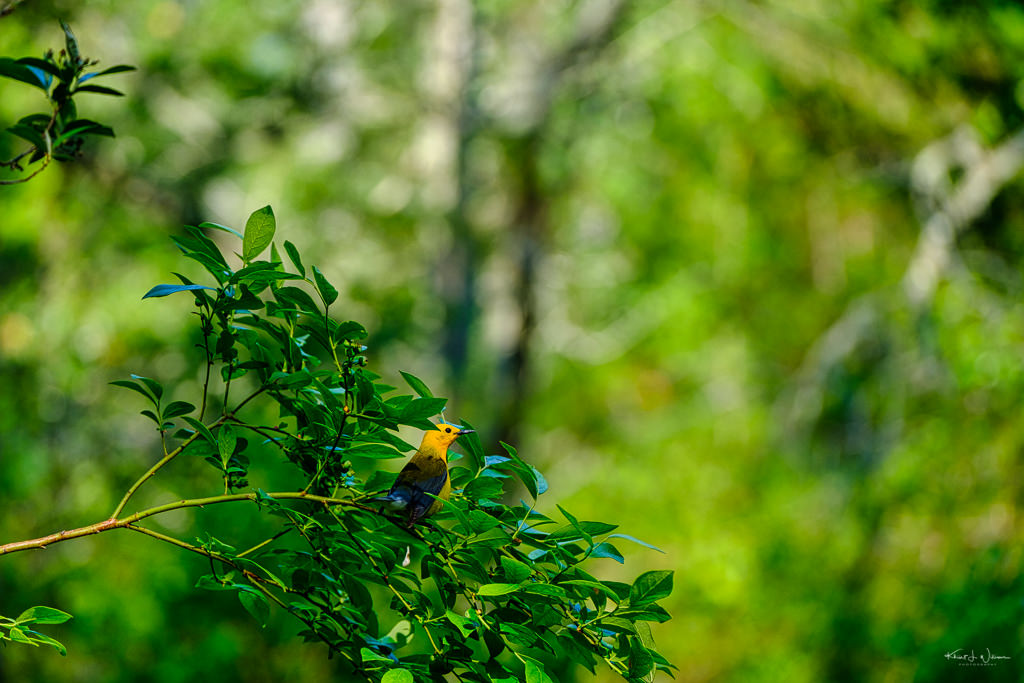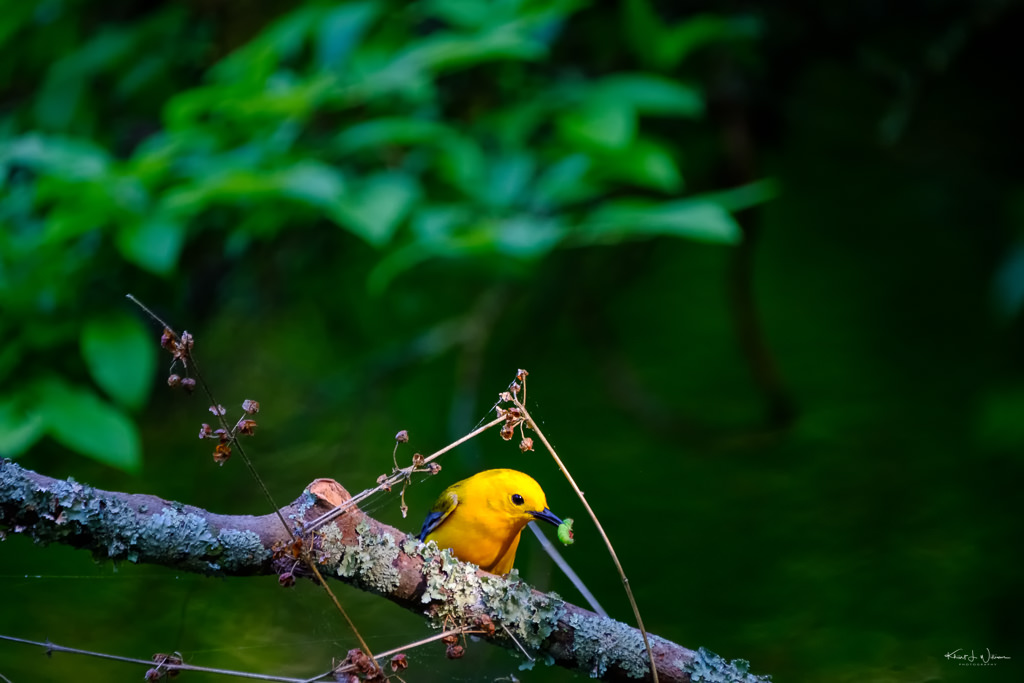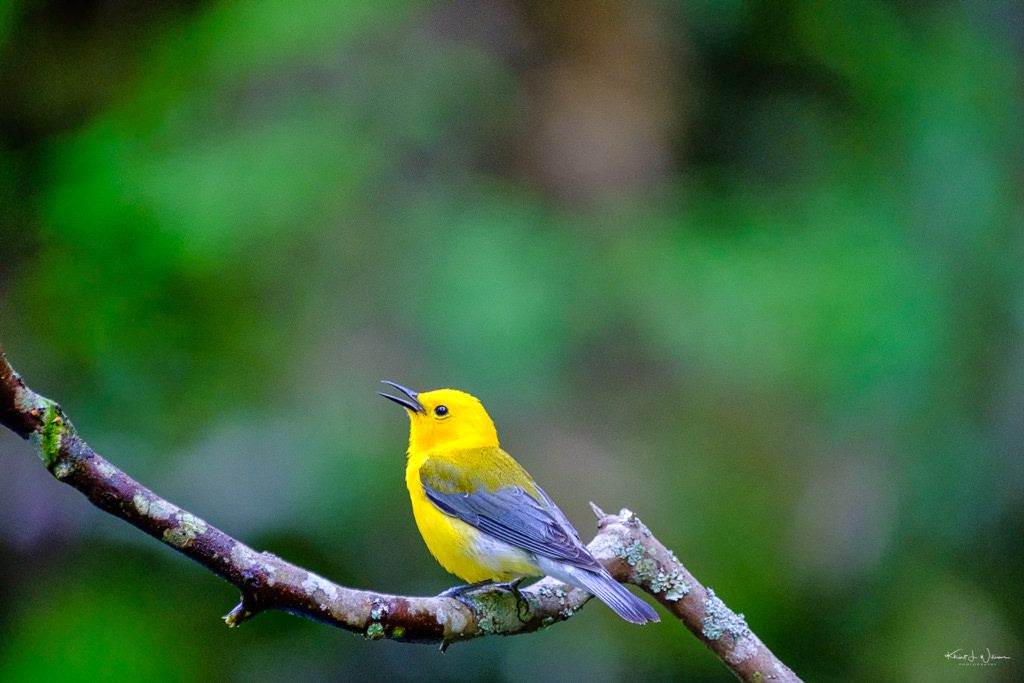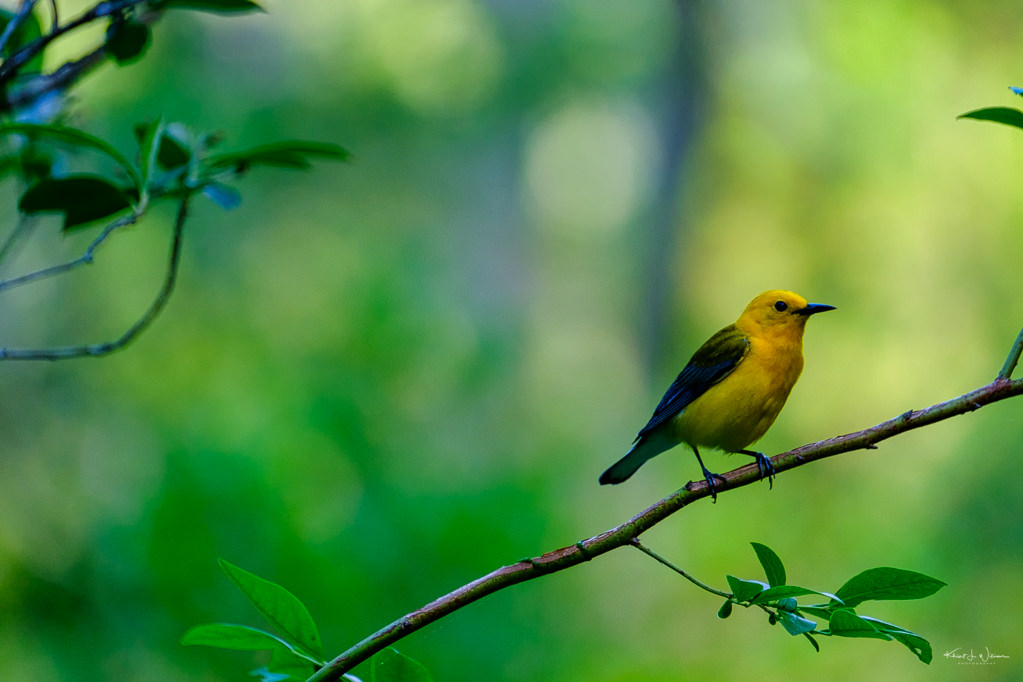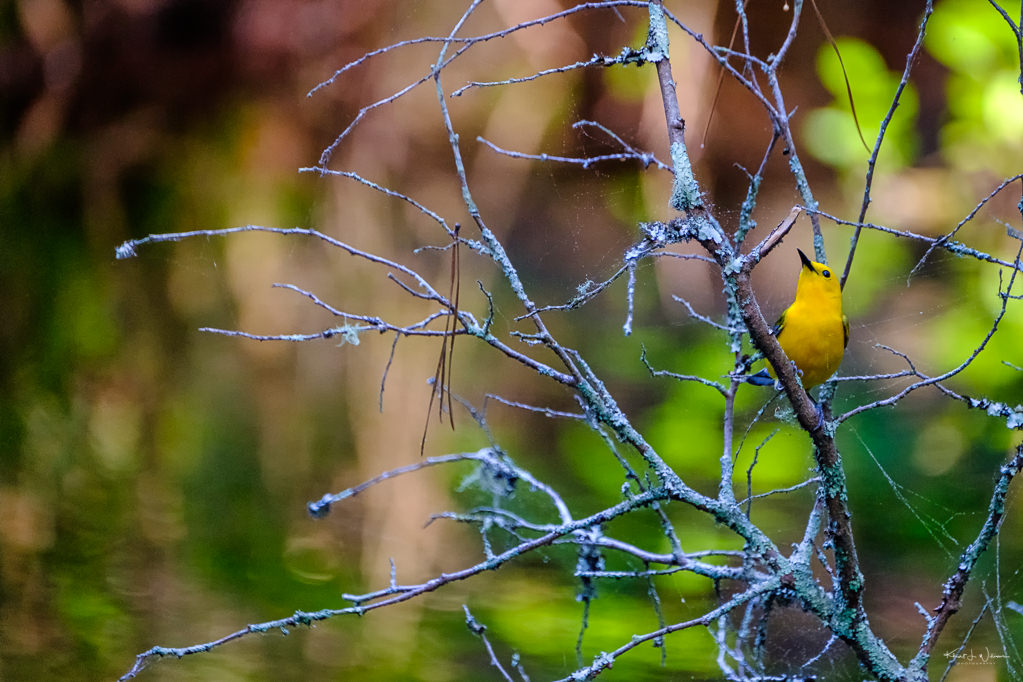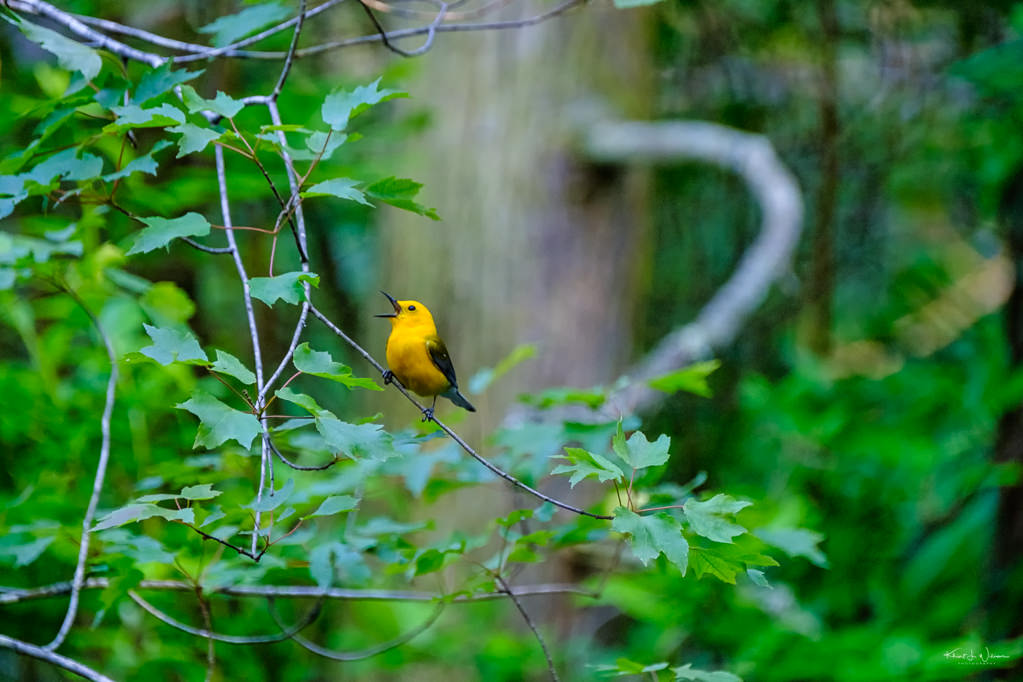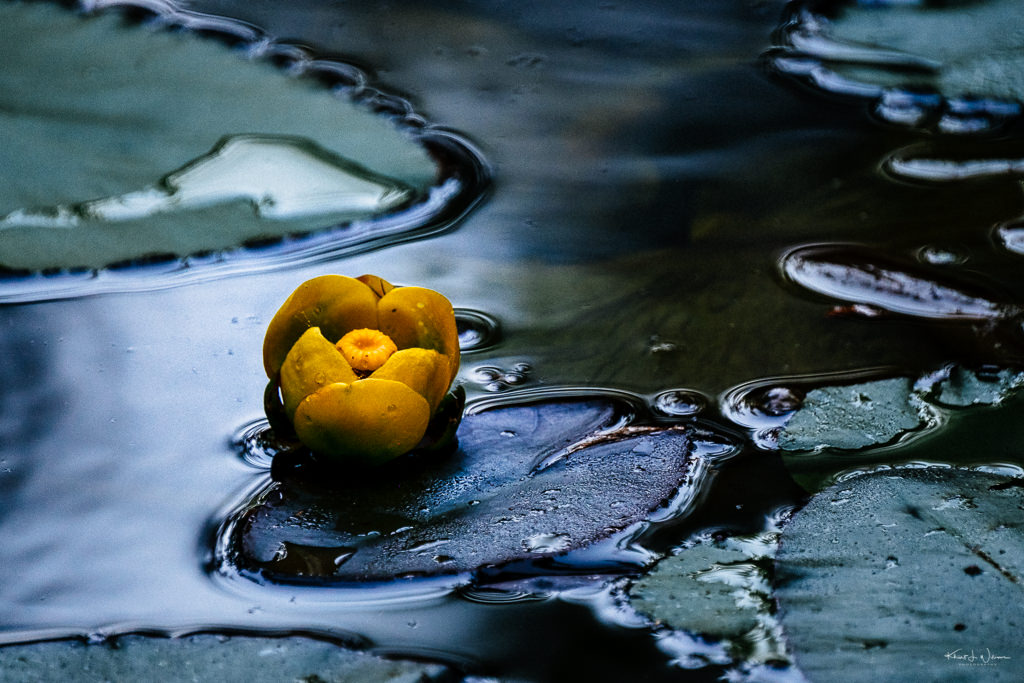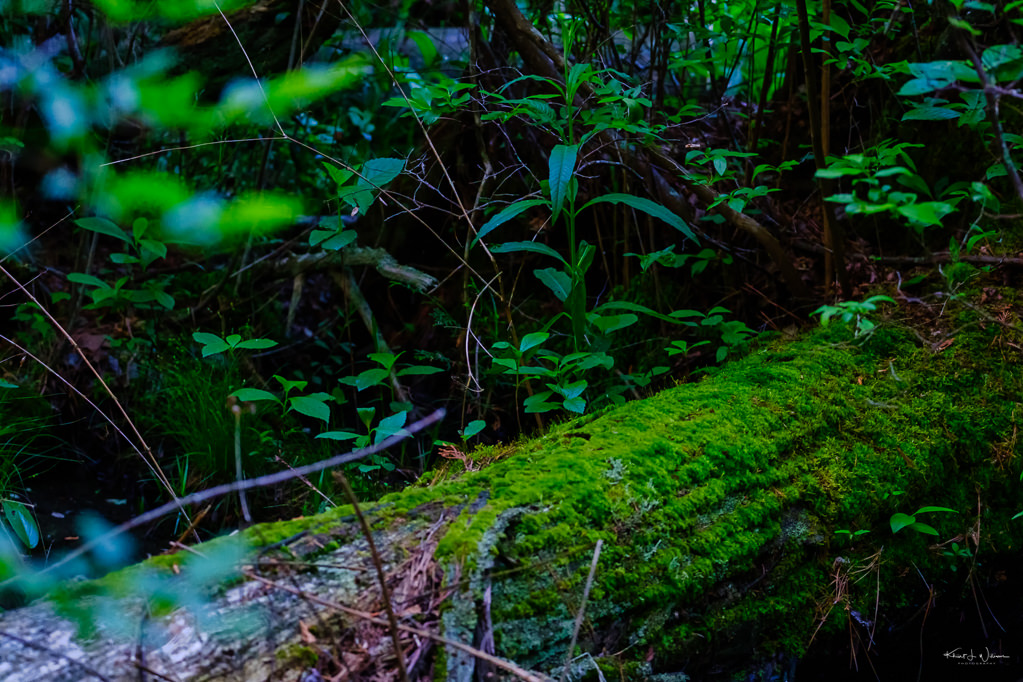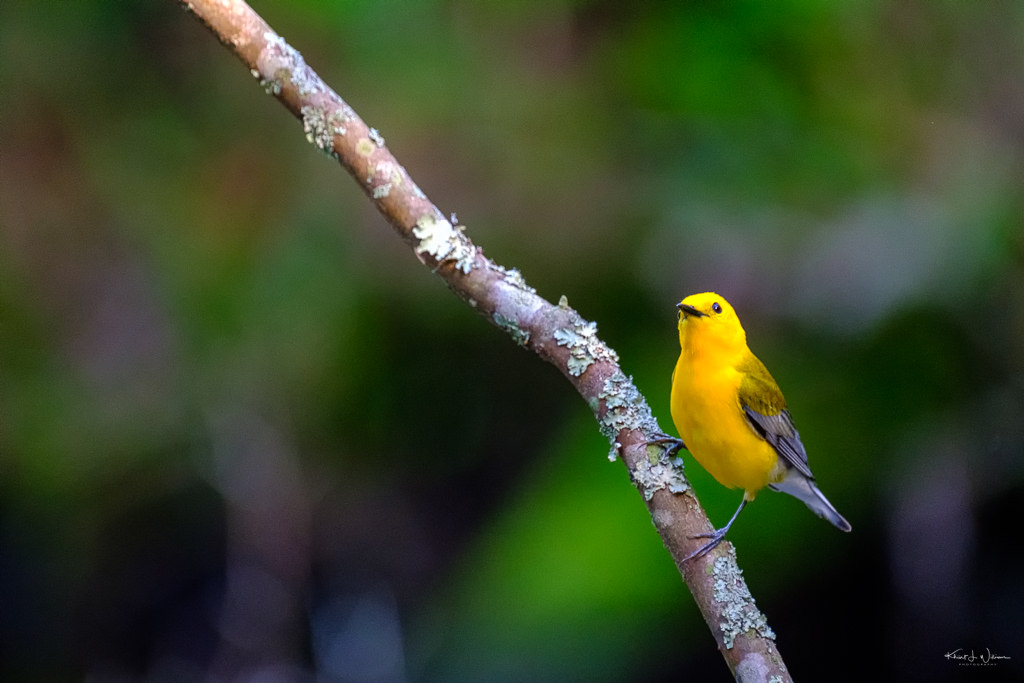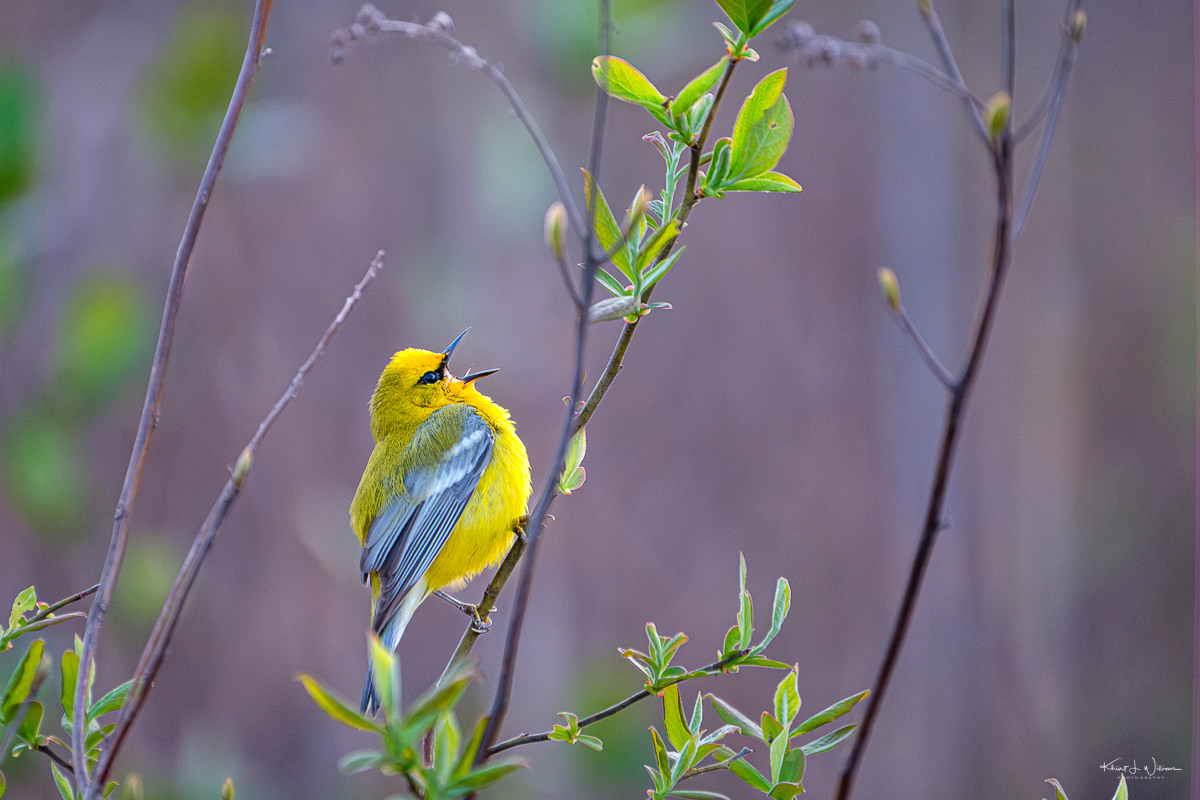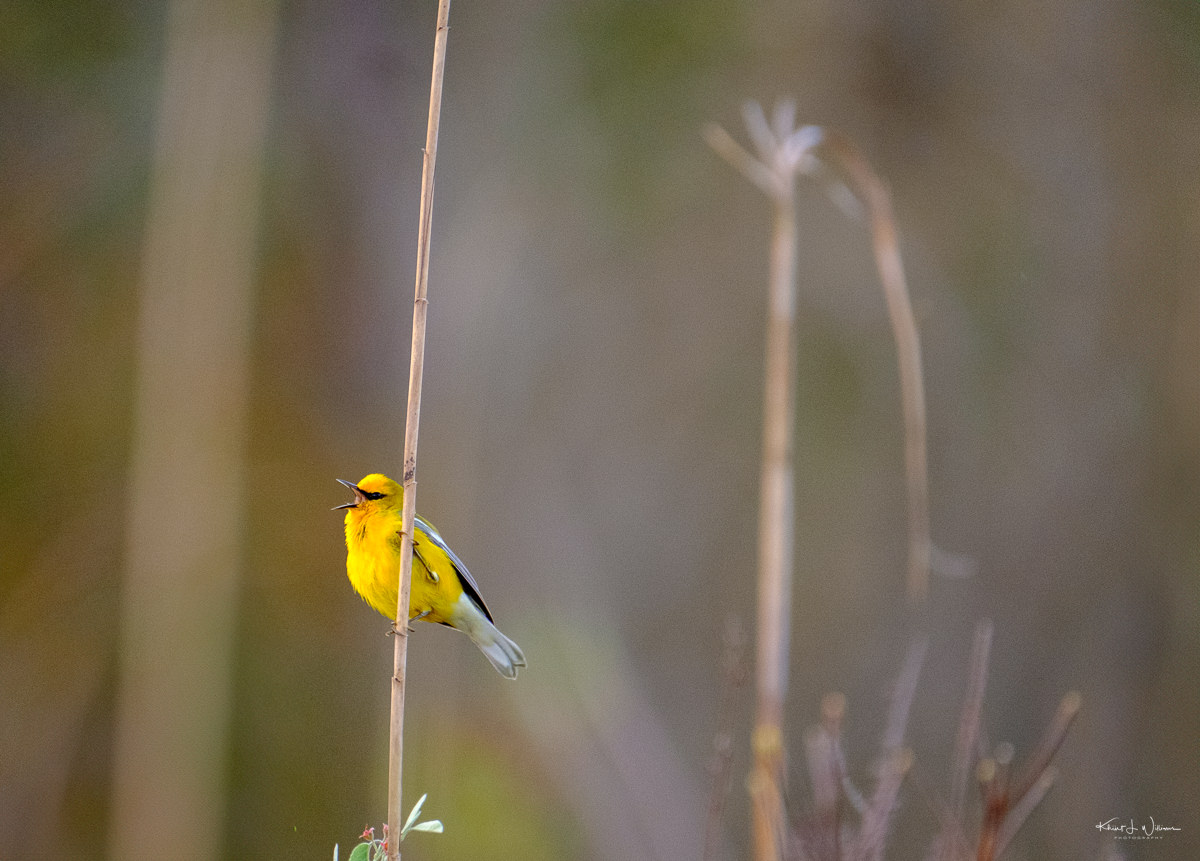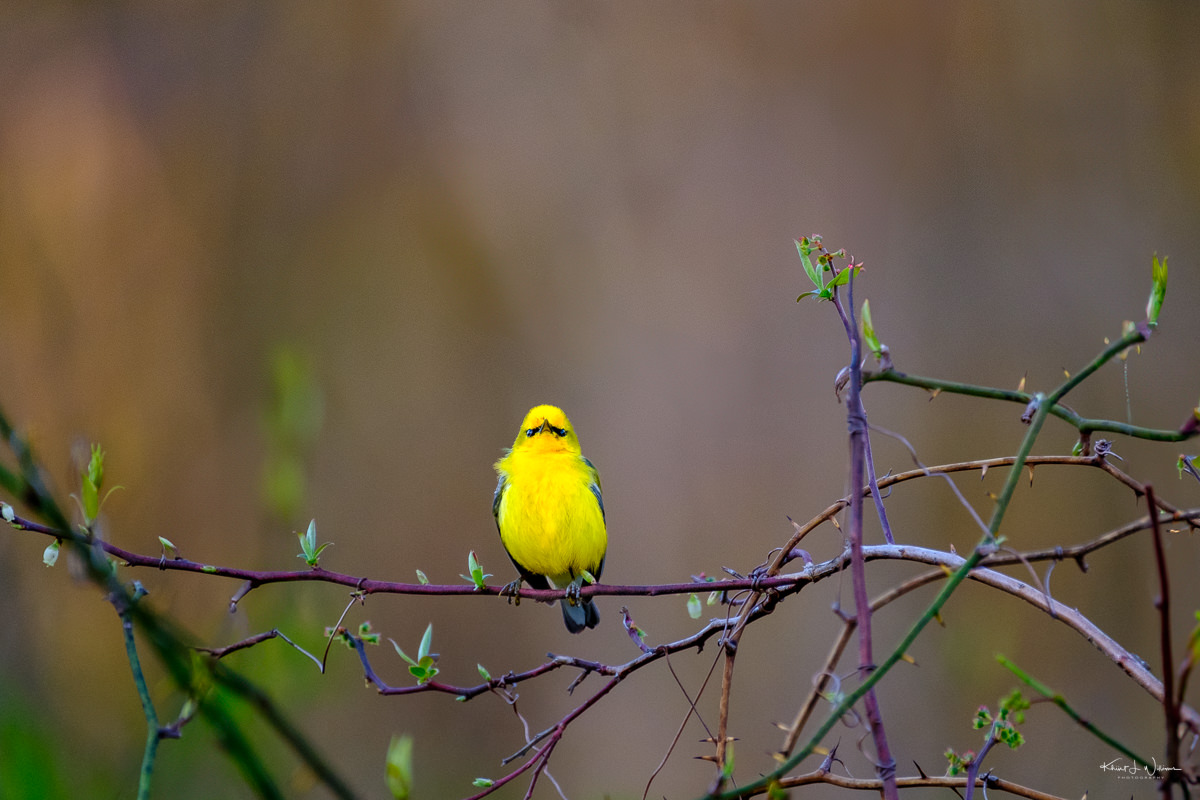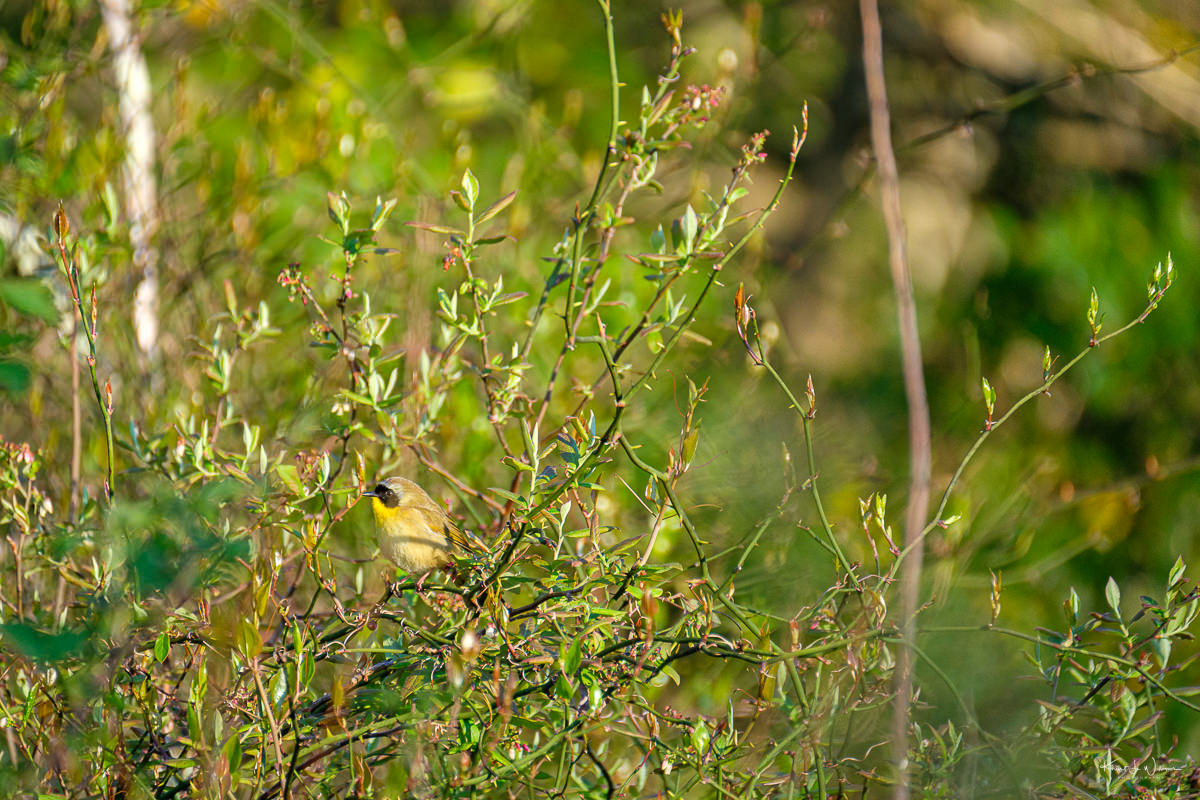Last weekend I joined photographer Ray Hennessey for a field trip to one of his birding spots in Woodbine in the pine barrens of New Jersey. While we had some challenges photographing the elusive pine warbler, we had no problems photographing this Prothonotary Warbler. The bird kept performing for us, stopping on sticks that poked out from the swampland and branches of the trees that lined the water.
The Prothonotary Warbler loves wooded swamps and breeds in flooded river bottom hardwoods, including black willow, ash, buttonbush, sweetgum, red maple, hackberry, river birch, and elm; or wetlands with bay trees surrounded by cypress swamp. This warbler nests near borders of lakes, rivers and ponds, normally only in areas with slow-moving or standing water and Winters in the tropics in lowland woods and mangrove swamps.
I am learning from my bird photography field trips because of the need for patience and persistence. For three hours, we stood among the trees waiting for the birds to arrive and put themselves in the right spots. There was no rushing, no bathroom break, and we kept our talking to the minimum. I could imagine being out in these woods by myself, listening to bird calls, to the sound of the wind in the trees and the water trickling over the stones of the nearby stream.
